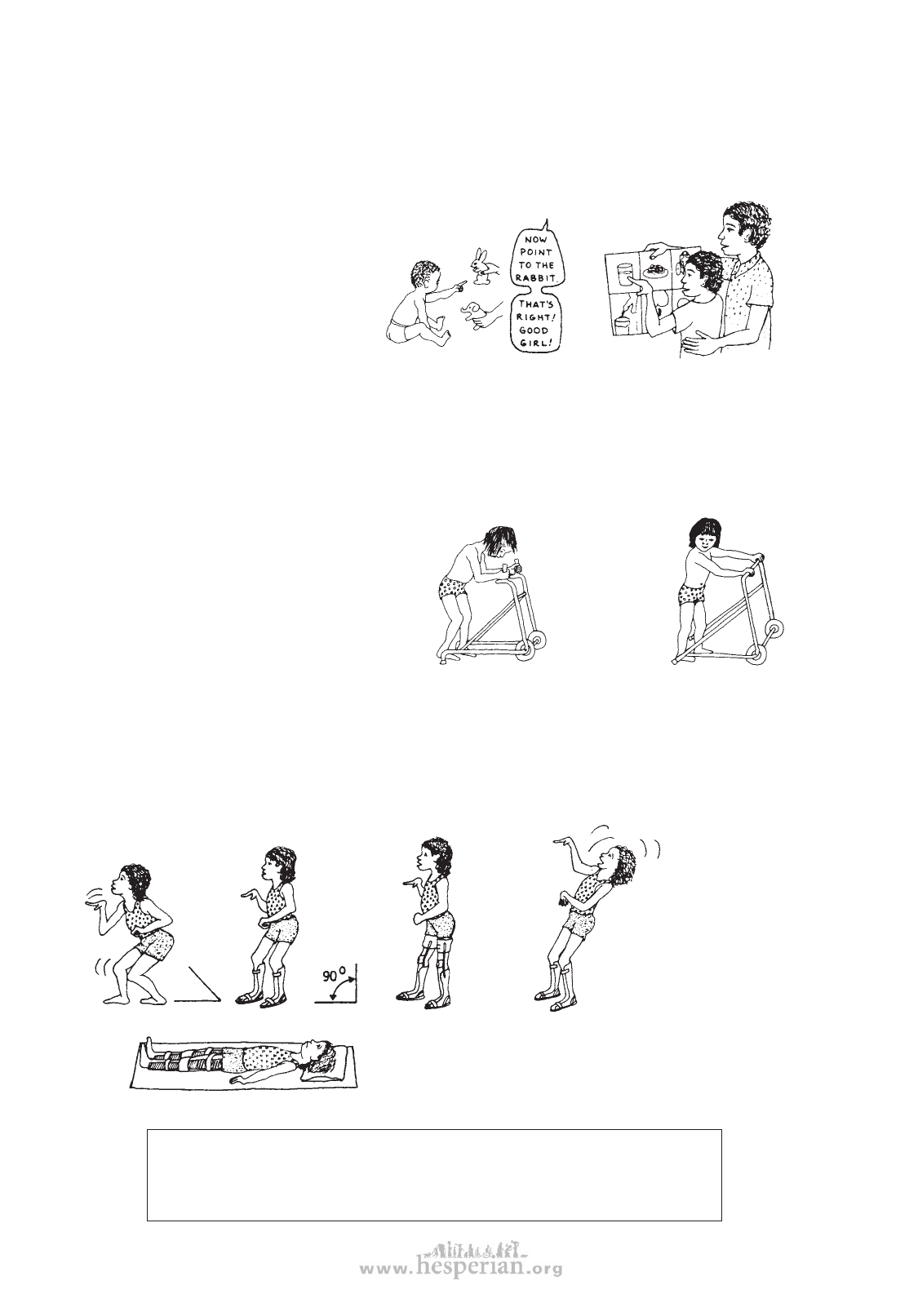
106 chapter 9
Skills for daily living and self care
A child with cerebral palsy will get abilities later than other children—but she will get
them! Of course, the child may not achieve everything, and may not always walk. But
make sure the child achieves what she can in each important area of development:
The child will often need a lot
of help with language and
communication skills. Develop
these skills in whatever way seems
possible: using words, gestures,
pointing (with hand, foot, head,
or eyes), or with communication
boards. (See Chapter 31 and
p. 578.)
Help the child become as independent as possible in eating, dressing, washing,
toileting, and in meeting other daily needs. Do this by guided practice, imitation, and step-
by-step learning. These self-care skills are discussed in Chapters 36 to 39.
Develop some form
of moving about
and, if necessary, use
wheel‑boards, wheelchairs,
pedal tricycles, walkers,
crutches, or other aids.
(See Chapters 63, 64, 65,
and 66.)
Keep experimenting until you find what works best.
For example, this
girl, with poor
body and hip
control, tends to
fall through the
space between
her arms when
the handgrips on
the walker are
upright.
She does
much better
on a higher
walker with a
handgrip that
runs from one
side to the
other.
Often leg braces do not help a child with cerebral palsy walk better. But sometimes
they do. When in doubt, try low-cost braces first, to look for possible problems. For
example:
Carla walks
in a very
crouched
position.
She may be helped by
below-knee braces that
hold her feet at nearly a
right angle (90°)
or by above-knee
braces that keep
her knees almost
straight...
But it is possible
that the below-knee
braces will throw her
badly off balance,
and that the
above-knee braces
will make balancing
even harder.
You will need to
experiment!
Even if braces for walking do not work, Carla may be
helped to walk straighter by using ‘night splints’ to hold
her knees straight and prevent contractures. (See p. 540.)
IMPORTANT: Practice in learning skills should take place with family and
friends so that the child develops skills in relating to others. However, the
child will also need time to practice her skills alone and with the person
who is mainly responsible for treating or teaching her.
Disabled village Children